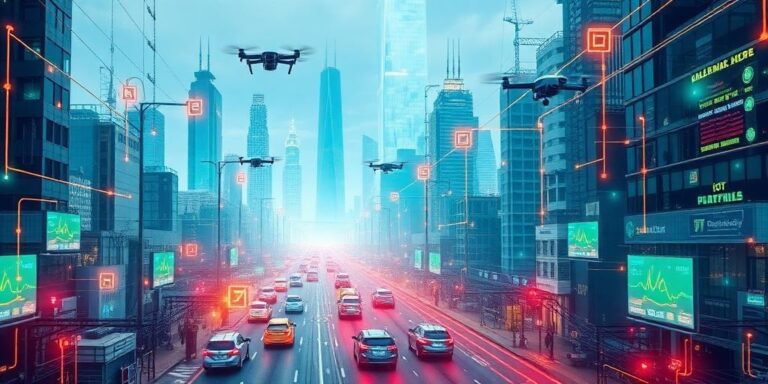The Unforeseen Consequences of Massive IoT Deployment (2027)
The year is 2027. The Internet of Things (IoT) has permeated every facet of our lives. From smart homes that anticipate our needs to smart cities optimizing traffic flow, the promise of a seamlessly connected world has largely been realized. However, this pervasive connectivity has also ushered in a wave of unforeseen consequences, challenging our understanding of security, privacy, and societal well-being.
Security Vulnerabilities: A Hacker’s Paradise
The exponential growth of IoT devices has created a significantly larger attack surface for malicious actors. Unlike traditional computers, many IoT devices lack robust security measures, making them easy targets for exploitation. A single compromised device can serve as a gateway to an entire network, enabling attackers to steal data, disrupt services, or even launch physical attacks.
Key Challenges:
- Lack of Standardization: The absence of universal security standards for IoT devices makes it difficult to ensure consistent protection across the ecosystem.
- Firmware Vulnerabilities: Many devices run outdated or poorly maintained firmware, leaving them vulnerable to known exploits.
- Default Passwords: A significant number of users fail to change default passwords, providing attackers with easy access.
Privacy Erosion: The Age of Constant Surveillance
The proliferation of IoT devices equipped with sensors and cameras has led to an unprecedented level of data collection. Smart homes, wearable devices, and connected vehicles generate vast amounts of personal information, raising serious privacy concerns. This data can be used to track our movements, monitor our behavior, and even predict our future actions.
Privacy Risks:
- Data Breaches: Sensitive data stored on IoT devices or in the cloud can be compromised in data breaches, exposing users to identity theft and other harms.
- Unconsented Data Collection: Many devices collect data without explicit user consent, raising ethical questions about the balance between convenience and privacy.
- Surveillance Capitalism: The aggregation and analysis of IoT data can be used to create detailed profiles of individuals, enabling targeted advertising and other forms of manipulation.
Societal Impacts: The Digital Divide and Algorithmic Bias
The benefits of IoT are not evenly distributed across society. The digital divide, which separates those with access to technology from those without, is further exacerbated by the high cost of many IoT devices and services. This can lead to disparities in access to healthcare, education, and other essential resources.
Social Challenges:
- Digital Exclusion: Low-income individuals and communities may be excluded from the benefits of IoT due to affordability barriers.
- Algorithmic Bias: Algorithms used to analyze IoT data can perpetuate existing biases, leading to discriminatory outcomes in areas such as law enforcement and employment.
- Job Displacement: The automation of tasks through IoT-enabled systems can lead to job displacement in certain industries, requiring workforce retraining and adaptation.
Mitigation Strategies: A Path Forward
Addressing the unforeseen consequences of massive IoT deployment requires a multi-faceted approach involving governments, industry, and individuals.
Key Strategies:
- Strengthening Security Standards: Developing and enforcing robust security standards for IoT devices is crucial to protect against cyberattacks.
- Enhancing Privacy Protections: Implementing strong privacy regulations and promoting data minimization practices can help safeguard personal information.
- Promoting Digital Equity: Investing in digital literacy programs and affordable access to technology can help bridge the digital divide.
- Fostering Ethical AI Development: Ensuring that algorithms used in IoT systems are fair, transparent, and accountable is essential to prevent discrimination.
Conclusion
The massive deployment of IoT has brought about numerous benefits, but it has also created a new set of challenges. By proactively addressing the security, privacy, and societal implications of this technology, we can harness its full potential while mitigating its risks. The future of IoT depends on our ability to create a more secure, equitable, and sustainable connected world.



